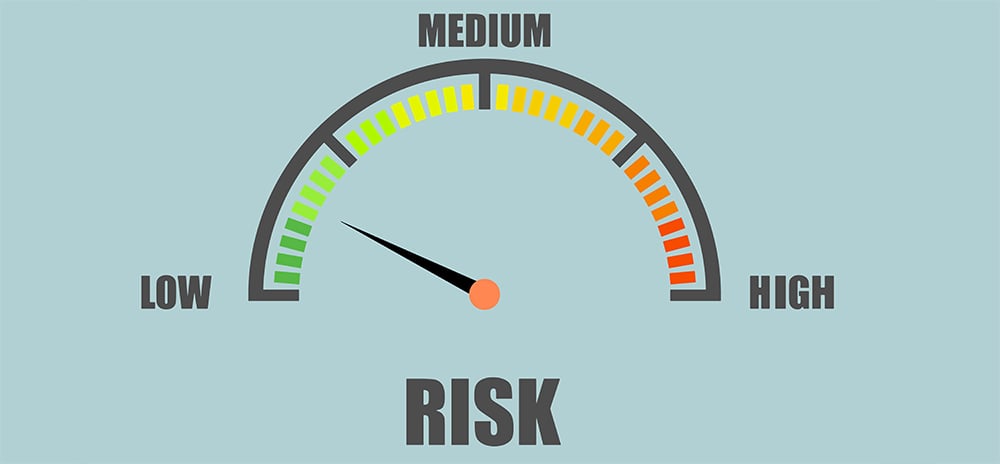The emphasis on violence prevention in the workplace, especially in the healthcare sector, continues to grow within the regulatory and certification communities. On November 15, 2017, The Centers for Medicare and Medicaid Services (CMS) enacted sweeping rules intended to “ensure adequate planning for both natural and man-made disasters.” The details of this specifically included active shooter situations. Earlier this year The Joint Commission (TJC) issued new requirements around workplace violence prevention. These became effective on January 1, 2022.
News regulations and certification requirements are challenges for all organizations, not just healthcare systems. However, hospitals have a higher standard of care than most industries for obvious reasons and they also struggle to compete with each other for dollars and talent.
The pressure to comply with regulations and to excel professionally can seem overwhelming to everyone who works in hospitals–especially nurses. Beyond regulatory requirements, hospitals are also concerned with achieving status and recognition through such measures as the American Nurses Credentialing Center’s Magnet Recognition Program® and scoring well in national hospital rankings.
The key to exceeding new organizational goals and standards of excellence is in training. There are no shortcuts to getting it right when evaluation time has arrived. Holistic violence management training programs incorporate new regulations, certification requirements, and standards for safety and excellence that exceed those requirements.
Whenever changes in the practice and future of healthcare appear, training must adapt and lead the way to enact true change and not just ensure compliance. Therefore, when assessing training against the new broad requirements for the prevention, management, and mitigation of violence, training programs that are already compliant and beyond the new standards are obviously preferable.
These new requirements from CMS include higher standards for reporting and investigating events; ongoing data collection to identify trends, patterns and gaps; and the use of multidisciplinary teams having responsibility for policies/procedures, data analysis, and support for victims.
Hospitals are also expected to meet new Joint Commission requirements, such as work Analysis/Risk Assessment training and education and violence management training for workers. That pretty much spells it out. There is no shortcut for training and the Joint Commission is saying as much.
Effective training is all about planning. Planning that includes the unique circumstances of an institution, its capabilities, and new standards involving violence awareness, prevention, intervention, recovery, and mitigation to prevent violence from happening when possible, minimize its impact when it occurs, and prevent it from recycling.
To begin, you must understand how violence “lives” within a setting as unique as healthcare. Healthcare does not have the luxury of turning away their customers because they are disrespectful, challenging, or uncooperative, so the problems patients and their families bring with them often become the problems of hospital employees.
Awareness
Training does not focus solely on violence when it happens. Great training also prepares healthcare professionals to recognize and respond to the causes, conditions and behaviors that signal violence may be coming.
The requirements of interventional medicine are demanding on patients, their families, and healthcare workers. Conditions such as overstimulating environments (like crowded noisy waiting rooms), and routine requirements (like filling out paperwork and answering health screening questions), can contribute to anxiety and elevate frustration for people experiencing communication and comprehension difficulties.
Also, hospitals are home to lots of people with physical or mental illnesses, patients and staff living the effects of past and current trauma. All these things are challenges to patients, families, and staff members’ ability to cope and regulate their behaviors.
Healthcare workers who have been assaulted on the job often say the assault “came out of the blue,” but that is rarely the case. Usually, there are many signals that indicate violence is on the way. Awareness requires an understanding of the signals of violence and their antecedents or causes, so we can prevent or avoid a physical assault.
Risk and threat assessment should be as routine for healthcare workers as an initial medical assessment. Healthcare workers can be trained to perform a quick assessment of potential hazards and threatening behaviors at the beginning of every encounter, and in a manner that does not interfere with normal routine or therapeutic relationships.
Threat indicators like distance, position, hand placement, and the inability to control the tone and volume of voice are the Five Basic Threat Indicators that healthcare workers routinely ignore as being “part of the job.” Healthcare providers are typically challenged by an inability to recognize the signs of aggression, because of the many times they have had to work face-to-face with people experiencing all levels of pain and emotional distress. Therefore, healthcare workers must be in a sense “re-trained” to not only recognize but respect threat indicators and to respond accordingly.
Trained staff also learn to recognize and interpret antisocial behaviors that generate violence. These are known as the Gateway Behaviors of Violence. Gateway behaviors include yelling, swearing, name-calling, and subtle or even direct threats. These are things healthcare workers often ignore but they are reliable indicators that someone is escalating towards violence. Recognizing these behaviors and responding to them appropriately can make all the difference for staff safety and patient outcomes. Healthcare workers must learn to identify the difference between service issues and antisocial behaviors and learn to set limits on inappropriate behaviors safely.
Cognitive and/or behavioral challenges can affect an individual’s ability to cope and can sometimes generate unsafe behaviors, due to inherent difficulties with communication, comprehension, and judgment. Trainees are familiarized with many of the signs and symptoms of neurocognitive disorders like dementia, autism, and intellectual disability. Additionally, they are familiarized in identifying psychiatric challenges, such as mood or psychotic disorders, and their barriers to comprehension, communication, and judgment.
Trauma Responsive training informs everything Vistelar does to build a better understanding for healthcare workers about the effects of trauma, at both the point of impact and over the entire life cycle. Trauma-responsive approaches to behaviors and the needs of patients and staff are necessary to prevent traumatization and re-traumatization for everyone who receives treatment or who works in healthcare.
Prevention
By learning the principles of Be Alert & Decisive and Respond, Don’t React, healthcare professionals put their newfound awareness to work by using the First Responder Philosophy® (FRP) to respond intentionally and as trained, rather than to react naturally (or possibly irrationally while under stress) when they arrive. They learn to assess the level and type of emergency (disturbance, medical, fire, other) and sound the alarm, by calling necessary help to the scene, and evaluate risks and threats before they enter a scene and get into a situation they can’t get out of safely.
Another great benefit of the FRP is the universality of the model. The new CMS regulations also include requirements for planning for natural disasters. The beauty of the FRP is that it truly treats violence as an emergency; therefore, the response model that guides and coordinates activity when faced with violence also guides them during fires, hurricanes, tornadoes, and earthquakes, hazmat incidents and other emergencies. So no matter what kind of emergency you are training for, you can apply the FRP to your framework. Having one response model builds consistency, reduces complexity, and maximizes resources during any emergency.
Healthcare workers also learn the concept of Non-escalation, methods intended to prevent pushing people who are behaving disrespectfully or experiencing emotional distress into crisis and violence. Non-escalation methods help healthcare workers manage the untrained responder’s natural tendency to get too close, talk too fast, talk too loud, talk too much, and touch unnecessarily.
Using the methods of Proxemics 10-5-2 for managing distance and positioning, the Universal Greeting for opening a verbal interaction, and Beyond Active Listening to facilitate communication and connection, interactions with everyone in the healthcare environment can begin on a solid footing by setting the tone for cooperation and mutual respect.
Intervention
Healthcare professionals must learn to intervene effectively and survive when violence happens. When faced with verbal Gateway Behaviors, professionals learn to set limits effectively by practicing persuasion and redirection techniques.
Methodologies for crisis management at the point of impact must be learned during experiential training to guide the steps of healthcare workers when they respond to volatile situations involving behaviors that are causing, or are likely to cause, harm to themselves or others.
Personal protection training gives healthcare workers the ability to avoid, escape, or defend when threat indicators are present or to survive violent assaults. Dedicated medically appropriate stabilization training guides the steps and hands of healthcare workers tasked with stabilizing out-of-control patients who must be stabilized to prevent injury to themselves or others.
Finally, no institution of any sort–hospital, school, or faith-based, business, or non-profit organization can operate without preparing for active shooter incidents. To give people a fighting chance to survive, training for everyone is necessary to maximize safety and survival during active shooter incidents.
Mitigation
Hospitals can mitigate violence by preventing similar incidents from occurring, or recycling (restarting), by carefully identifying the antecedents to violence at the scene (meaning the conditions, interactions, and behaviors which probably caused or contributed to the disturbance or behavioral emergency), and then taking steps to reduce those conditions to prevent the incident from restarting or similar incidents from occurring. This is accomplished by continuing to evaluate and manage the incident by carefully devised and proven incident response models such as the First Responder Philosophy®.
The First Responder Philosophy guides healthcare workers beyond the stabilization of the scene and the individuals involved, to checking the medical status of all involved. Then on to the long-term monitoring phase, which involves any necessary medical intervention, security monitoring, and treatment planning.
Healthcare workers learn as part of the response model to communicate with departments, administrators and others who need to be informed, before they document the incident to provide data for continuous evaluation, to develop a treatment plan to avoid recycling, and other future planning. Then a final debriefing is required to check on the welfare of everyone involved, from the patients, to staff, to bystanders, and to seek ongoing solutions to prevent recycling and improve future performance, which is at the heart of any mitigation strategy.
No matter what the requirements are from CMS, Joint Commission, OSHA or any governing body, training is the only way to ensure that professional standards–past, present, and future–are understood and applied on the job. Best of all, responses to disrespectful, threatening, and violent behavior that are team-based, pre-planned, and practiced in training not only increase compliance with industry standards, but they actually keep people safer and even support better therapeutic outcomes for patients.








